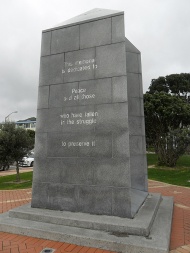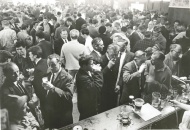Articles
State housing

New Zealand's first state house was formally opened on 18 September 1937. But the government has provided rental housing for New Zealanders for more than a century. Explore the history of this country's various state housing schemes and their contribution to the New Zealand way of life.
- Page 7 - State house styleThe design of state houses has been fodder for armchair and professional critics since the beginning. Detractors slagged the first workers' dwellings for being 'too swell' and
After the Second World War, the government acted on an urgent need for new housing. As the site for a new city, Porirua was ideal. It had plenty of cheap land and was already linked to Wellington by rail, and a new motorway to the area was about to be built. Work began in 1960 on reshaping the landscape. The village of Porirua (dating from the 1860s) disappeared, the Kenepuru Stream was straightened and more than 770,000 cubic metres of rock and soil were dumped at the head of the Porirua Harbour. By 1966, the new city centre was finished. The total cost was £1 million. East of the motorway the suburbs of Cannons Creek and Porirua East grew out of rolling farmland. More than 2,700 state houses were built. The new city obscured much of Porirua’s history. The earliest human habitation dates back to 1450 AD. A succession of tribes lived around the twin inlets of Porirua Harbour. In 1846, tension between Ngāti Toa and European settlers culminated in several skirmishes. The fighting was inconclusive, but Ngāti Toa’s foremost chiefs were removed – Te Rauparaha was arrested, and Te Rangihaeata retreated to the Manawatū.






